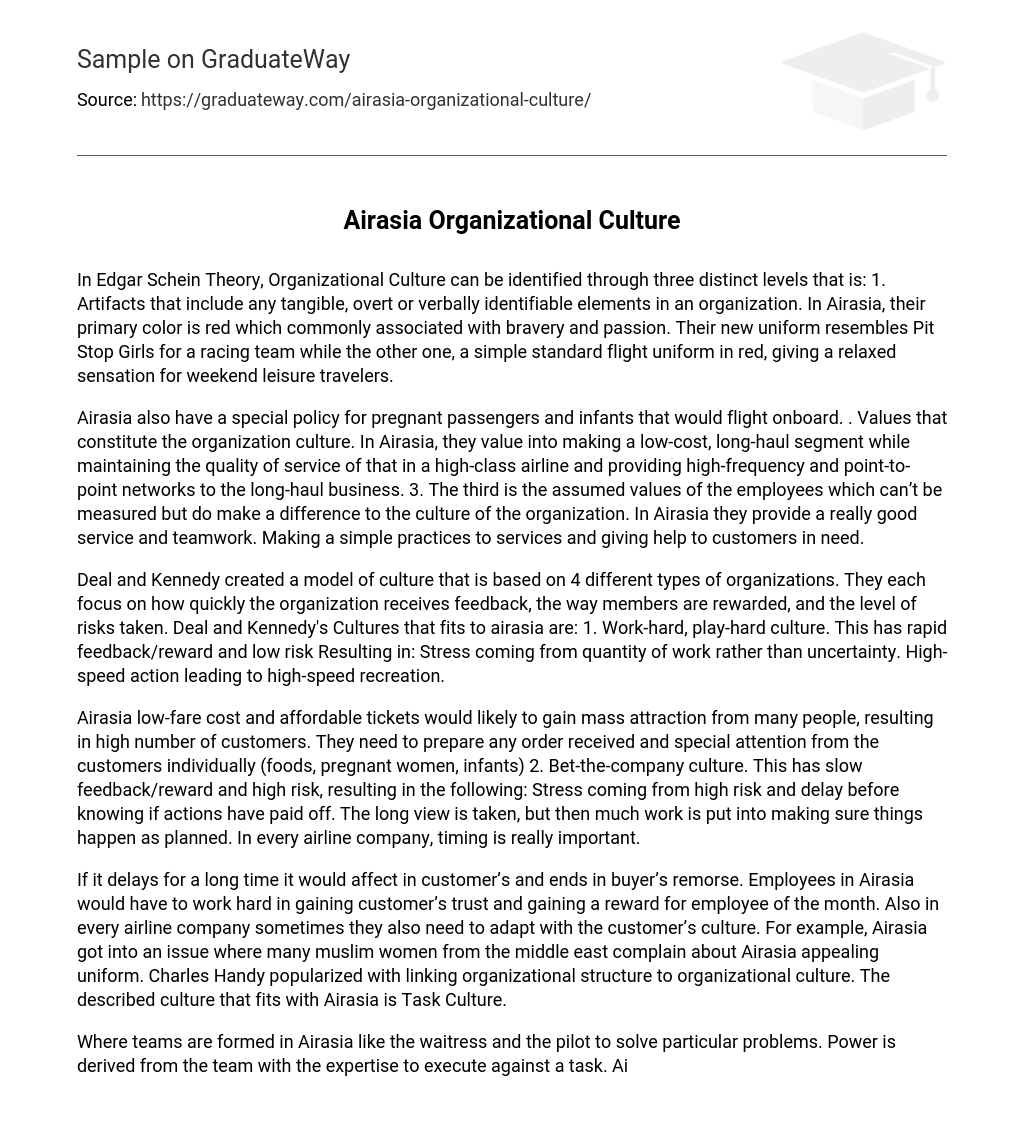In Edgar Schein Theory, Organizational Culture can be identified through three distinct levels that is: 1. Artifacts that include any tangible, overt or verbally identifiable elements in an organization. In Airasia, their primary color is red which commonly associated with bravery and passion. Their new uniform resembles Pit Stop Girls for a racing team while the other one, a simple standard flight uniform in red, giving a relaxed sensation for weekend leisure travelers.
Airasia also have a special policy for pregnant passengers and infants that would flight onboard. . Values that constitute the organization culture. In Airasia, they value into making a low-cost, long-haul segment while maintaining the quality of service of that in a high-class airline and providing high-frequency and point-to-point networks to the long-haul business. 3. The third is the assumed values of the employees which can’t be measured but do make a difference to the culture of the organization. In Airasia they provide a really good service and teamwork. Making a simple practices to services and giving help to customers in need.
Deal and Kennedy created a model of culture that is based on 4 different types of organizations. They each focus on how quickly the organization receives feedback, the way members are rewarded, and the level of risks taken. Deal and Kennedy’s Cultures that fits to airasia are: 1. Work-hard, play-hard culture. This has rapid feedback/reward and low risk Resulting in: Stress coming from quantity of work rather than uncertainty. High-speed action leading to high-speed recreation.
Airasia low-fare cost and affordable tickets would likely to gain mass attraction from many people, resulting in high number of customers. They need to prepare any order received and special attention from the customers individually (foods, pregnant women, infants) 2. Bet-the-company culture. This has slow feedback/reward and high risk, resulting in the following: Stress coming from high risk and delay before knowing if actions have paid off. The long view is taken, but then much work is put into making sure things happen as planned. In every airline company, timing is really important.
If it delays for a long time it would affect in customer’s and ends in buyer’s remorse. Employees in Airasia would have to work hard in gaining customer’s trust and gaining a reward for employee of the month. Also in every airline company sometimes they also need to adapt with the customer’s culture. For example, Airasia got into an issue where many muslim women from the middle east complain about Airasia appealing uniform. Charles Handy popularized with linking organizational structure to organizational culture. The described culture that fits with Airasia is Task Culture.
Where teams are formed in Airasia like the waitress and the pilot to solve particular problems. Power is derived from the team with the expertise to execute against a task. Airasia uses a small team approach, where people are highly skilled and specialized in their own area of expertise. Kim Cameron and Robert Quin made a research on organizational effectiveness and success. Competing values produce polarities like flexibility vs. stability and internal vs. external focus – these two polarities were found to be most important in defining organizational success.
Airasia fits best in the Market Culture and Clan culture, where a competitive workplace with leaders like hard drivers and a friendly workplace where leaders act like father figures. It can be seen from their vision and mission. Their goal is to be the largest low cost airline in Asia while maintaining the highest quality product by embracing technology to reduce cost, the best company to work for whereby employees are treated as part of a big family, Create a globally recognized ASEAN brand and serving 3 billion people who are currently underserved with high poor connectivity and high fares.





